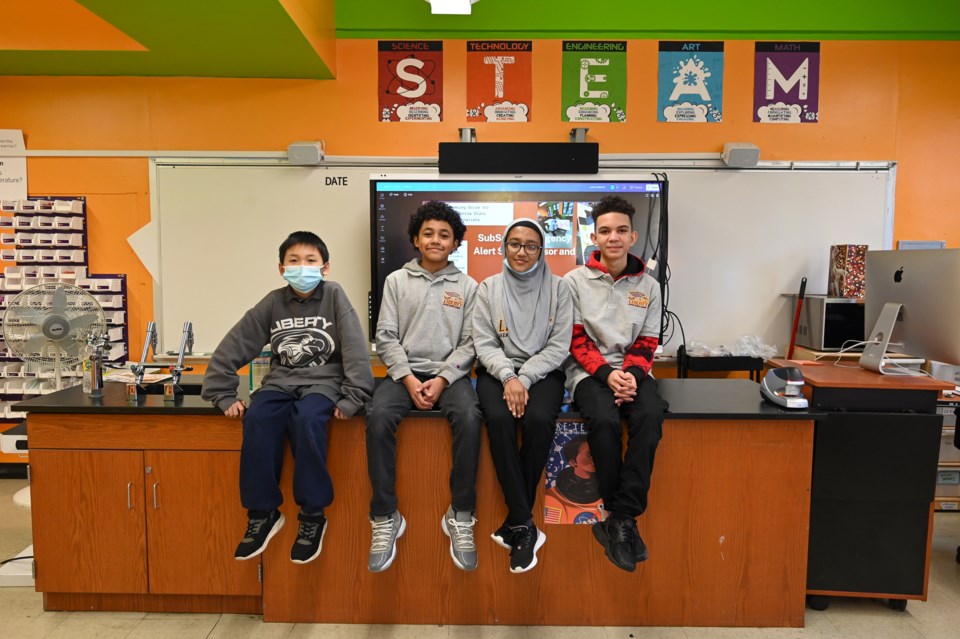Four seventh-graders from East New York were paid a very special visit from some of New York City's top transportation officials last week after their subway safety idea caught the attention of the MTA in a recent BK Reader article.
On Jan. 12, Liberty Avenue Middle School students Sinthia Orni, 13, Criss Roman, 13, Chris Santos, 13, and Alan Xu, 12, waited with nervous anticipation ahead of a meeting with the New York City Transit President Richard Davey and other transit officials.
"We are really excited to share our project," Roman said.
"We know it's a big deal because a lot of people don't have this opportunity."

"It feels amazing that we get to represent East New York because we’re usually seen as a bad neighborhood," Orni added.
"It feels good to know these special people really care about our project and they can really help us."
The meeting was prompted by news that the Liberty Avenue Middle School team was named one of 10 state finalists in the 13th annual Samsung Solve for Tomorrow STEM competition.
BK Reader covered the story about how the public school students advanced to the finals with their idea for placing new smart signs in subway stations. The signs would allow commuters to discreetly report either a 911 emergency to police, or a mental health emergency to mobile mental health responders, using two separate buttons.
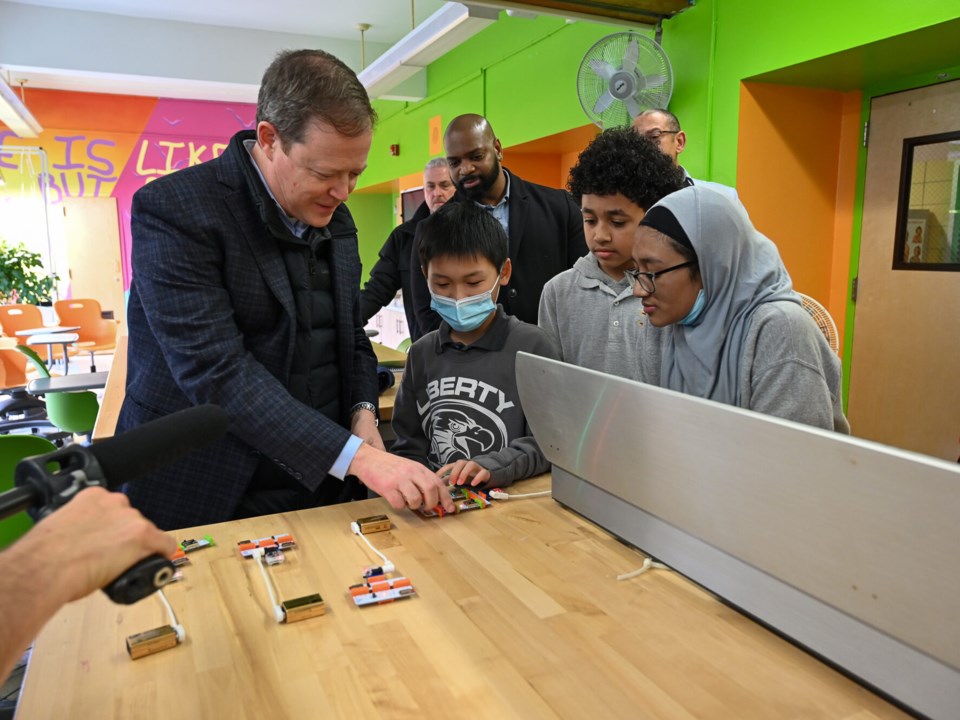
The MTA spotted the story, and Davey said he had to meet the young innovators.
"They've said to us that they see we have help points in the system, but what they're encouraging us to do is take it to the next level and particularly for mental health," he told BK Reader.
"What's moving for me is that these kids see challenges in our system every day and they're trying to find ways to be constructive and to get people help. That's one of the reasons I was inspired to meet them," he said.
The seventh graders’ finals-winning idea came from their own experiences of living and commuting in New York City, they said. Almost 80% of Abrams’ students commute to school every day via the subway, and almost every single one of them had witnessed an uncomfortable incident or crime on the train.
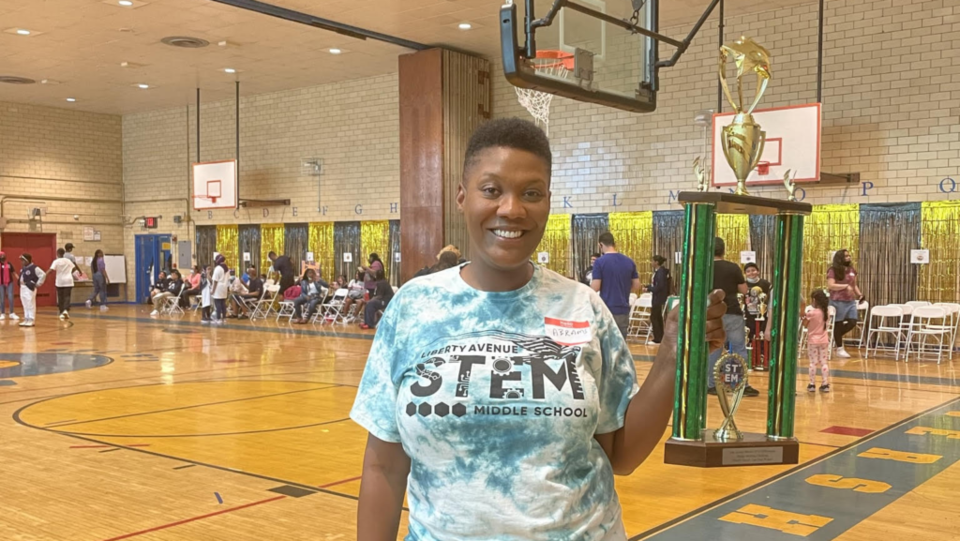
At the meeting, Davey was joined by NYCT Department of Subways VP Demetrius Crichlow and MTA technology experts Ramez Farag and Rashleigh Tudor.
The officials listened and asked questions as the students took turns presenting the different elements of their project, inspired by the idea of updating the now-obsolete emergency service mini towers around the neighborhood, where you could lift a red tab to alert FDNY and a blue tab to alert NYPD.
“A blue button will be used to indicate a mental health emergency and a red button will be used to indicate serious crime or emergency situations,” the students said.
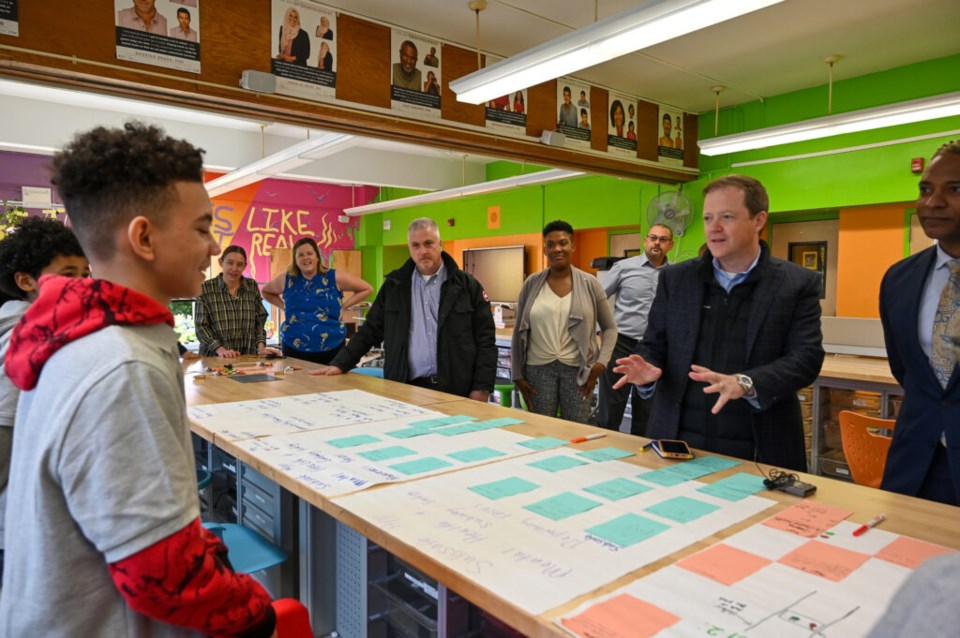
The sign will use both Bluetooth and GPS technology to alert the nearest mobile crisis team for mental health emergencies or the Police/Fire for the red button issues, they added.
"The way you’ve thought about how to take care of folks is really impressive," Davey told the students, adding with a laugh, "Do you have a resume?”
The students also gathered information to refine their idea for the next stage of the competition, including asking Crichlow for stats on how frequently the MTA's emergency buttons get used (between 50-60 thousand times per month, about 1,500 of those for emergencies).
The students even showed their journalism skills: Xu asked when the MTA was releasing the new R211 trains. Answer: in the next few months.
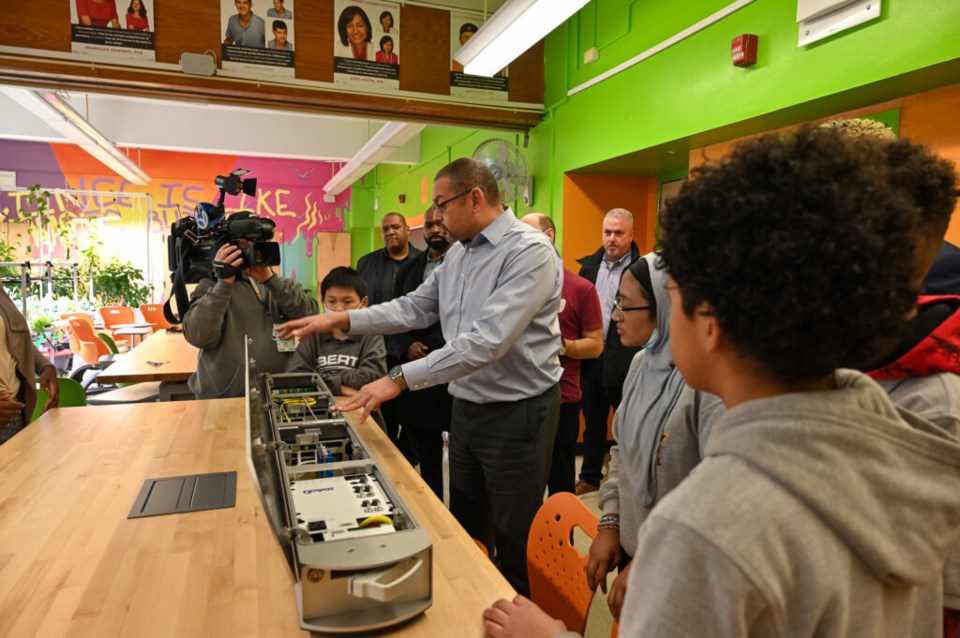
"I liked it because I got to meet the brains behind the MTA," Xu said afterward.
"I feel proud of myself," Santos added. "I hope we win!"
Abrams said hearing the transit officials wanted to meet with the kids was a surprise.
"The project required us to get expert advice, so the fact that they contacted us before we contacted them was amazing."
Abrams said her background was not in STEM, but she fell in love with it after completing her Masters in Education. This is the second time she has led a science team to the finals of the Samsung STEM competition, the last time winning the school $65,000 in prizes.
The teacher-extraordinaire calls her classroom — which features a hydroponics lab and a robotics club — an "innovation station."
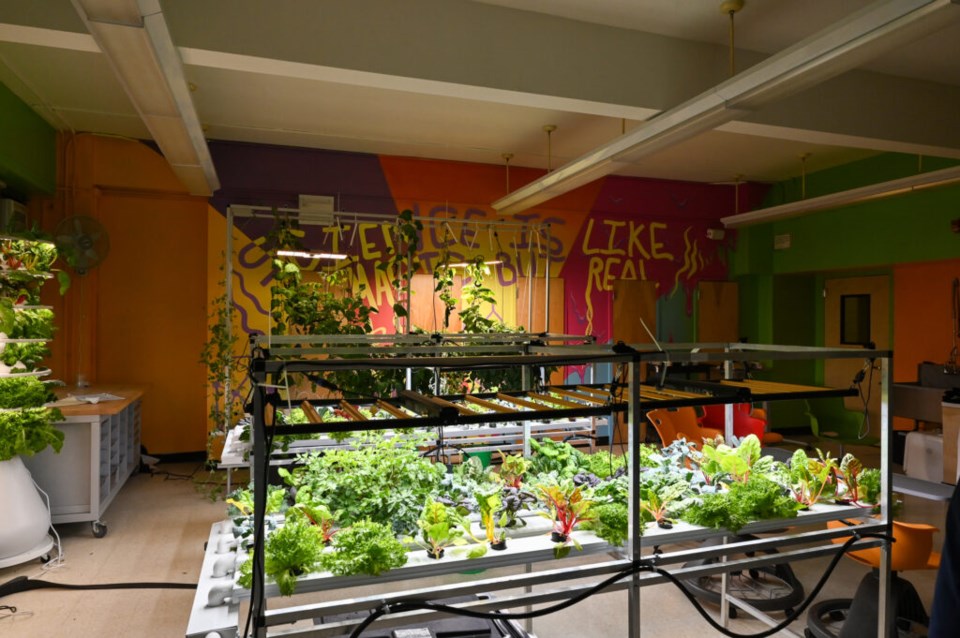
"During lunch, my classroom becomes a place where students who don't want to be downstairs in the crowd — the introverts — they come in and start playing on the computers or doing some coding."
After the meeting, Davey told BK Reader the kids inspired confidence in the future of the MTA.
"When I took this job I thought it was going to be about transportation. It's a lot more than that; it's about mental health, homelessness, addiction. All the things that happen in our city happen in our system," Davey said.
"If these kids are involved in the future of transportation, the city is in good hands."
Liberty Avenue Middle School is the only Brooklyn school to place in the state finals. They have already won $2,500 in tech and school supplies for making the state finals.
The students will now advance to the state finals of the competition. In May, three schools will be selected as National Winners, receiving $100,000 in prize packages.

